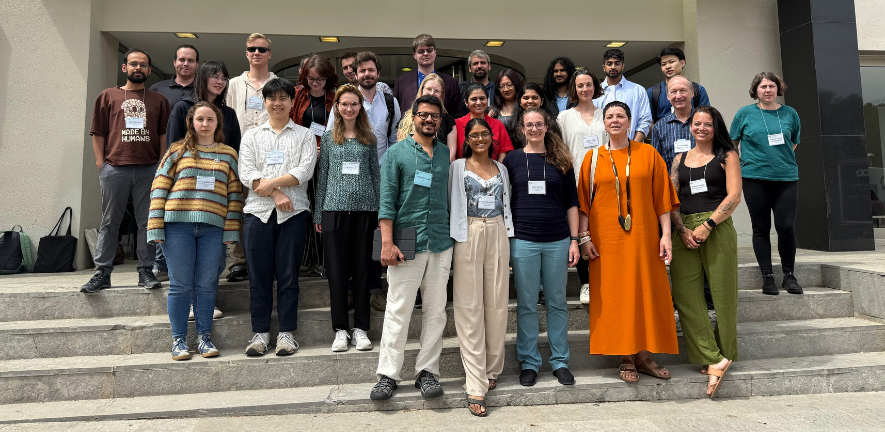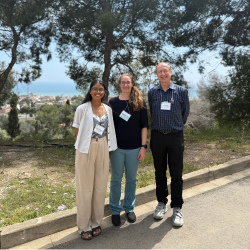Odara Medagedara, a PhD student at the MRC Toxicology Unit, had the pleasure and the challenge of co-organising her first conference. Odara was formally in Vito Mennella's group where she performed the volume electron microscopy (vEM) work that led to the opportunity to co-organise this conference. She is now part of the Willis and MacFarlane groups with co-supervision from the Rawlins group at the Gurdon Institute and the Mennella group at Queen Mary University. Read about the symposium and how she found the experience below:
Co-organising a Gordon Research Symposium
by Odara Medagedara
The first Gordon Research Symposium (GRS) on Volume Electron Microscopy (vEM), held the weekend before the 2025 Gordon Research Conference (GRC) on vEM, brought together early-career researchers from across the field to share their work and connect with peers. As the first GRS for the vEM field, it provided a valuable space for emerging scientists to present research, exchange ideas, and engage in discussions in a welcoming setting.
Chaired by myself and my co-chair, Kara Fulton (Harvard Medical School), the symposium was designed to highlight innovative research, facilitate deep technical and conceptual discussions, and create space for early-career voices. As a third-year PhD student organizing my first conference, this experience was a deeply rewarding challenge. I’m incredibly grateful for the enthusiasm, generosity, and insight everyone brought to the weekend.
The Symposium began with an engaging keynote on high-resolution and high-throughput 3D EM delivered by Professor Harald Hess. What followed was a diverse program of talks spanning a wide range of vEM applications, including synaptic connectivity in the brain, ultrastructural changes in cancer, imaging of marine plankton biodiversity, and advances in automated analysis and data integration. Breaking up the talks were poster sessions which were lively and interactive, and it was exciting to see how engaged everyone was with each other’s work.
One standout highlight was our career development panel, which brought together a fantastic group of speakers to discuss pathways in vEM – from core facilities to academic research. The conversation was honest, eye-opening, and full of practical advice. Many attendees shared that this session was one of the most impactful moments of the Symposium. For this reason, I would very much like to thank all our panellists for their openness and thoughtfulness.
Another encouraging sign of the enthusiasm within this community was the election for the next GRS (vEM) chairs. We had six early-career researchers step forward to run – a fantastic show of commitment to keeping this momentum going. We’re excited to announce that Yuxin Zhang (The Francis Crick Institute, United Kingdom) and Chandni Bhickta (European Molecular Biology Laboratory Heidelberg, Germany) will co-chair the next GRS (vEM) in 2027. We’re already looking forward to seeing how they shape the next edition of the Symposium.
I also want to extend heartfelt thanks to everyone who participated and contributed – our speakers, discussion leaders, poster presenters, and every attendee who brought their curiosity and energy. The collaborative spirit of this community made the 2025 GRS (vEM) not just successful, but truly memorable.
I’m excited to see where this momentum takes the vEM community next!



